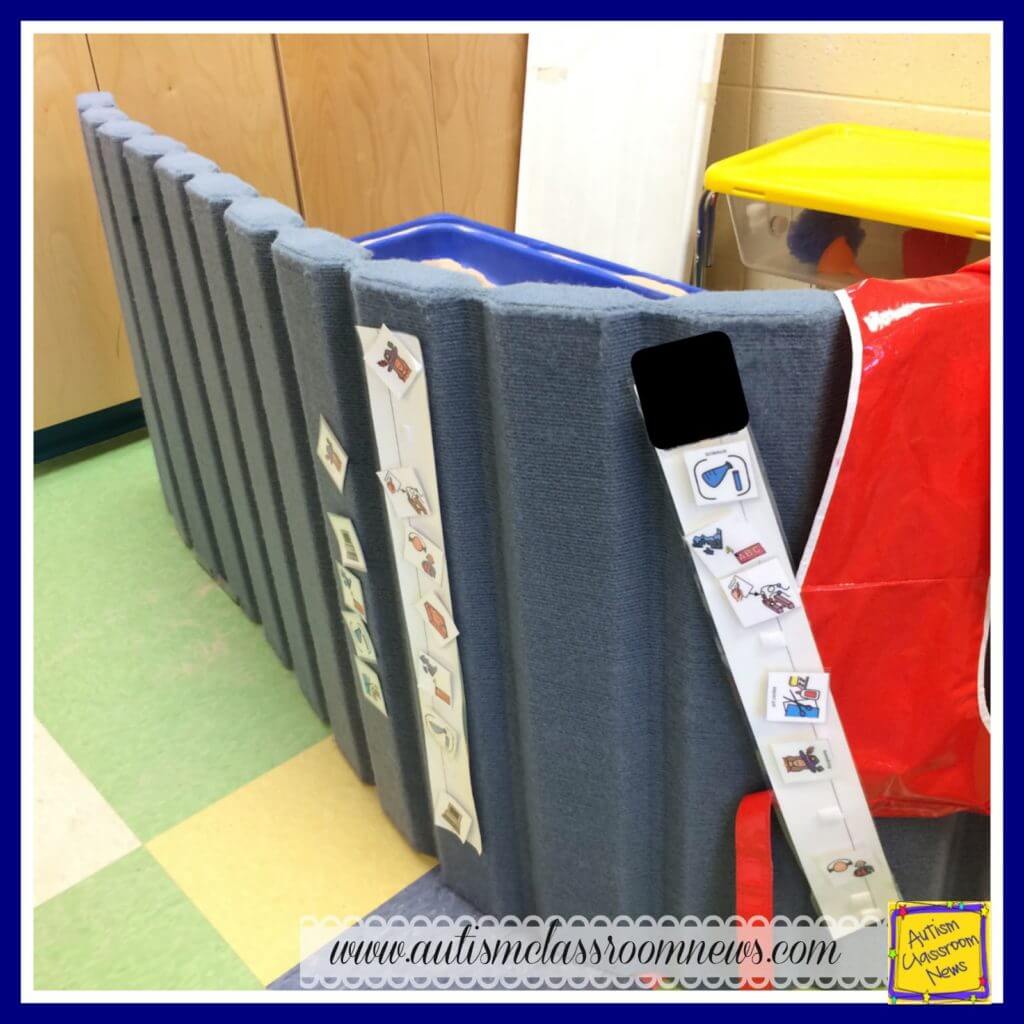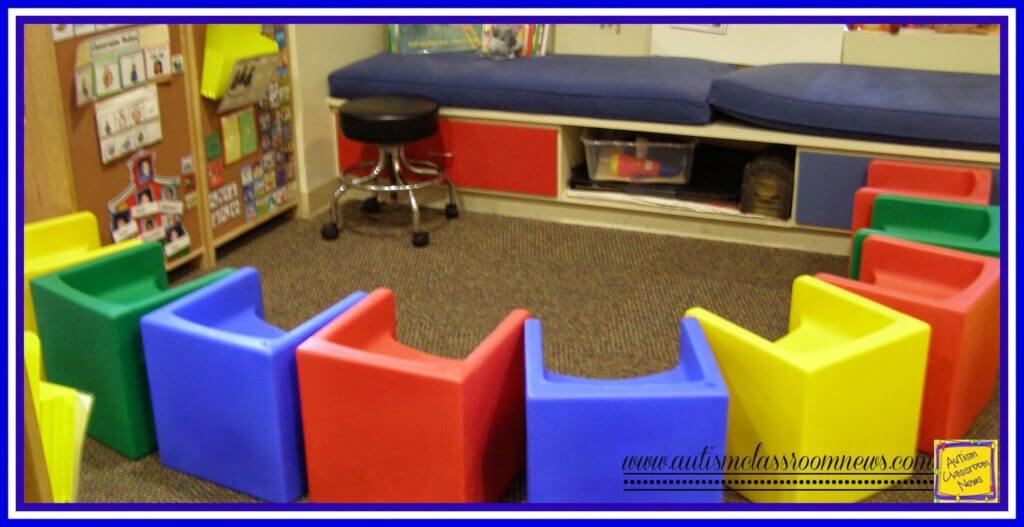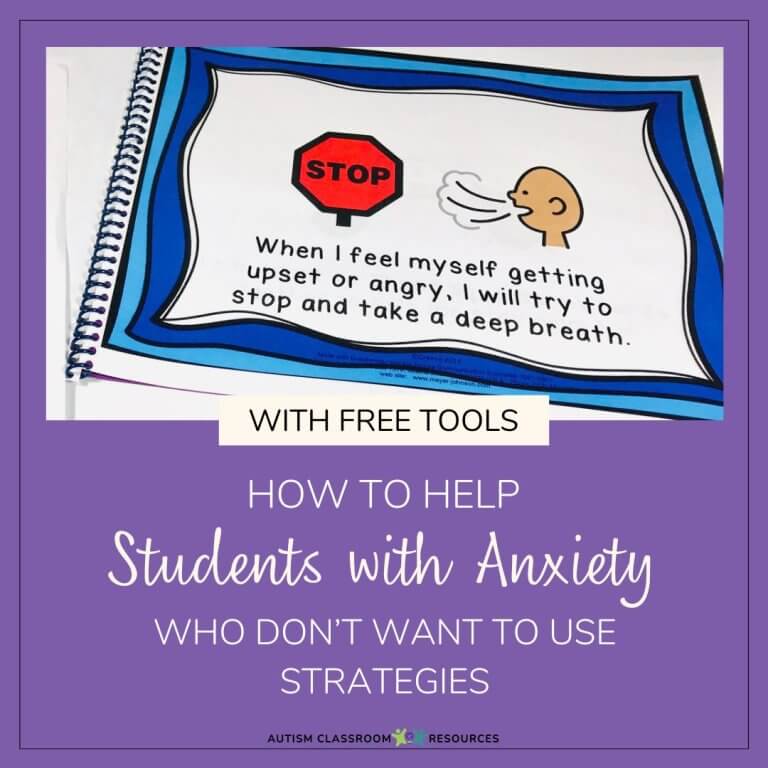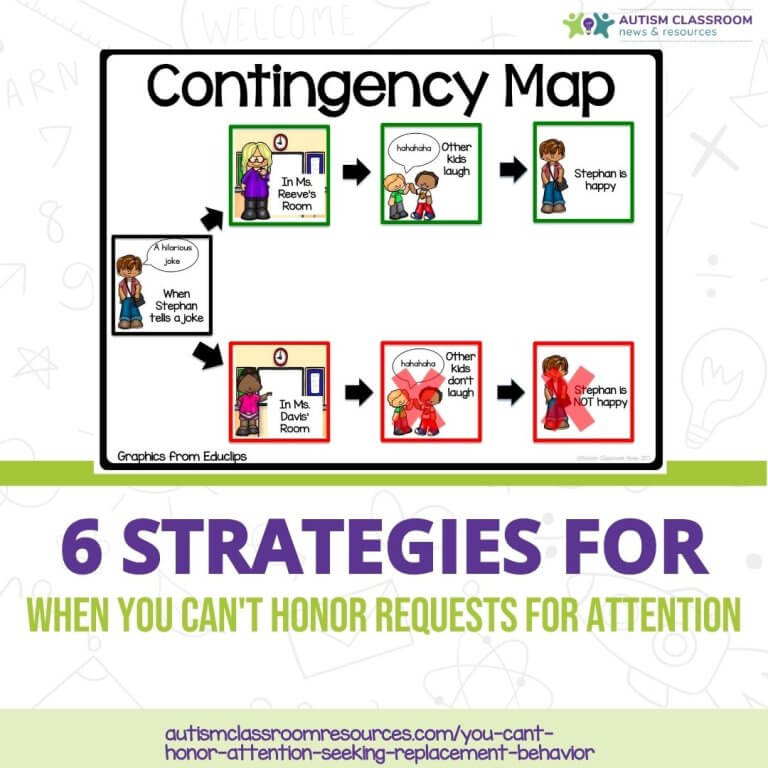Sharing is caring!
Sometimes, preventing challenging behavior can be as simple as changing around the furniture. And sometimes it helps to have the furniture you need. Since many of us are setting up classrooms for the school year, today I want to talk about how the physical arrangement of the environment can affect challenging behaviors.
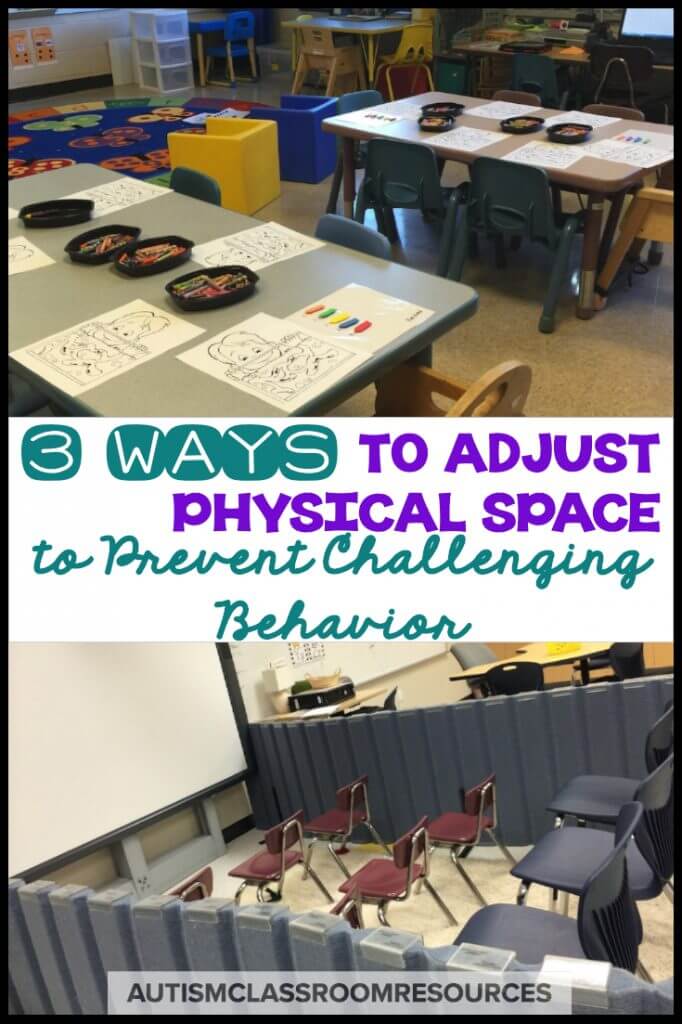
Today I am continuing with the antecedent strategies for preventing challenging behavior in step 4 of 5 Steps to Meaningful Behavioral Support. To see the rest of the series click HERE.
Where Do You Like To Shop?
There are a myriad of ways that the environment affects the behavior. Think about stores you like to shop at.
- Do you like big stores or small stores?
- Like to hunt for bargains and are willing to put up with some clutter?
- Or do you like everything where you can see it and in the right place to find it?
Let me give you an example. I’m a fan of Walmart for a somewhat unusual reason. I don’t like the ones around where I live. However, I really like them when I’m on the road. I have shopped in Walmarts for classroom materials in at least 6 to 7 states and in all areas of those states. Here’s what I like.
Walmarts are predictable. I can walk into one in GA and chances are it’s one of two layouts I can find in Ohio or Florida. This means I can find what I need quickly and GET OUT!
When I want Velcro, I know where the craft section is that I will find it. When I need file folders, I know where the office section will be. And when the classroom set up gives me a headache, I know where to find the Advil.
I like it because it’s predictable and I can focus on what I need to do and not the environment around me.
In contrast, I hate Marshalls and TJ Maxx and places like that because I can’t be bothered to hunt through things to find what I want. Let’s face it, while I like to shop…I’m happy to do most of my shopping online.
How Does the Environment Affect Behavior?
Anyway, what was my point there? The physical environment affects ALL of our behaviors. If you are in a very crowded store with few open checkouts and someone cuts in front of you in line, you might be more likely to call them out on it than you would in a less crowded store where there are more clerks. And then there’s the exhibition of all those challenging behaviors on Black Friday….but I digress.
In the classroom, the way your furniture is arranged, where people sit, and where materials are stored all affect the behavior of those in the room–students and teachers. There is no one-size-fits-all here, but there are some general rules and guidelines that are helpful to consider.
Problem: Open space leads to running and groups gathering in the wrong places
Leaving a large open area in a classroom, particularly if it surrounds furniture that can become the center of a track, encourages running. While you don’t want the room broken up into what I think of as rabbit tunnels where you have to keep moving things out of the way to move around, you do want to avoid large empty spaces around a kidney table because it will become a track in the middle of your classroom.
Solution:
Use your furniture, and dividers, to break up the space and create areas within your classroom that have specific functions. Don’t leave spaces in the classroom without a function as they will either become storage places or places for gatherings you probably don’t want in the middle of class.
I like to use low shelves for boundaries because most of the students I work with do best with firm, 3-dimensional boundaries. Some students will respond to a tape line on the floor or different colored carpet, but many students with challenging behavior will need to have a shelf to tell them where an area ends as they won’t be looking at the floor when racing through the room.
I like shelves because they also store materials near an area, but if I can’t use shelves because of space or because I don’t have them, then I’ll use Sound Sponge Dividers. The picture above is of a small divider that I’ve come to love. It’s carpet covered, easy to set up, moveable if needed, but sturdy and not likely to fall over if pushed when it is set up correctly.
I also really like it because it’s low enough to see over to provide supervision of the whole room and because I can stick Velcro on it if needed. I’ve put Amazon affiliate links at the end of the post for them and you can also do an internet search for them to see where they are sold.
Problem: Students don’t stay in their areas during work time
Sometimes it’s as simple as moving the table in a different direction. I love the picture below because it shows how we originally set up the room on the left and how we modified it after a day of chase the preschoolers, er instruction. In the picture on the left, students who were pretty independent were fine, but students who didn’t yet know how to stay in their area would get up and leave the area.
Solution 1:
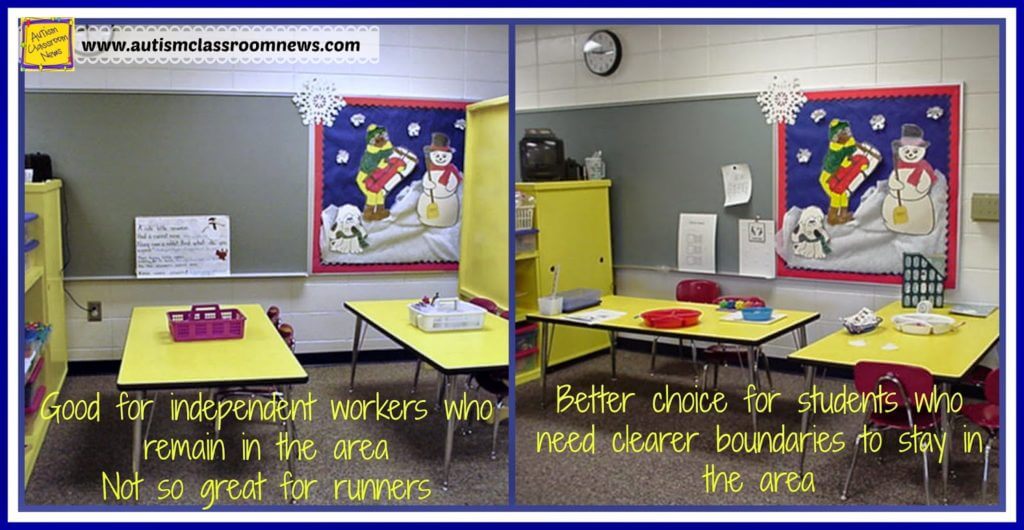
Turning the table around allowed us to put their backs to the wall with the teacher facing them (assuring that other staff can see and supervise the rest of the room) and contain them while we taught them basic learning readiness skills like staying in their chairs. We taught it by reinforcing them for doing it, but the physical boundary of the table and the wall really helped them to understand the expectations.
Solution 2: Seating Options
I think I included this in part because I love this picture. If you have little ones in your class, Educubes are a fantastic way to help them understand boundaries when they want to fall out of their chair and bother those around them. Unfortunately they only fit them up until about the primary grades, but if we teach them right, we can teach them to stay in their seats before they grow out of them! For older students, you can use student desks–the kind that are attached to chairs to give some of that structure in place of a table and chair.


And who knew you could get them through Amazon (much less last time I bought them you had to buy 4, now you can buy 1). I put links at the end of this post with links to Amazon affiliate links and they appear to be sold through Kaplan. You can also get them with trays to provide a work surface for young kids. They are great because they are not restraining the student (if she stands up the tray will fall down) but they provide a work surface at her level and give some boundaries and cues about remaining in her seat.
Problem: The student is highly distractible by everything that goes on around him.
This is a very busy classroom with students and teachers coming in and out all day while children are pulled into offices for instruction. In the meantime there is a small group of students who are working in this classroom wtih all this stuff going on.
Solution:
I loved the teacher’s idea of using library carrels for the students’ work space. Here you see his work system set up for him to work independently and the work space has structure and prevents distraction by screening it out. We even put his schedule on the inside of the carrel so it was in a consistent place near where he was working.

Until next time,


